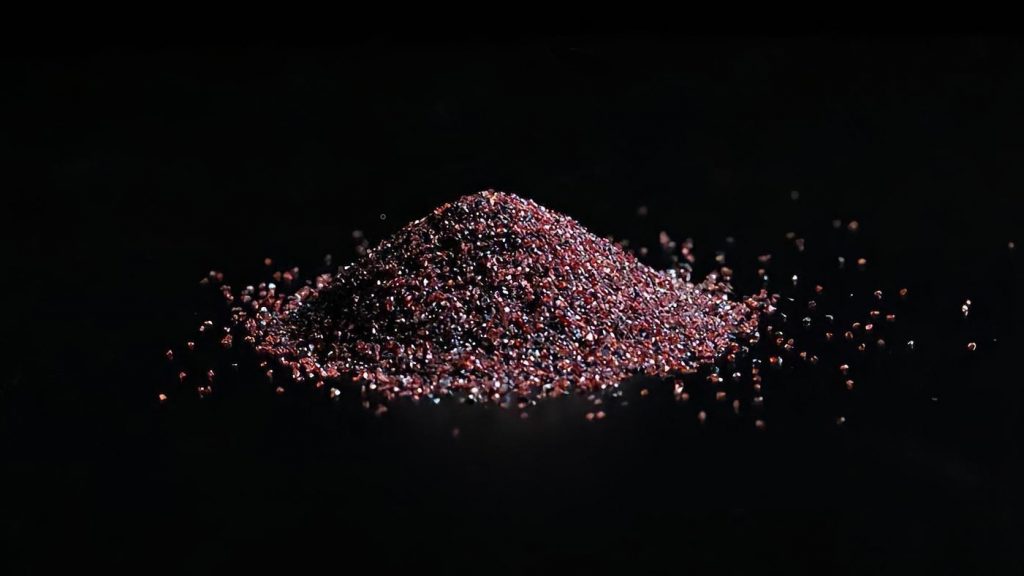
Garnet sand is pink/reddish color natural, iron-free, mineral abrasive. Predominantly it is almandite consisting of sub-angular particles.
Application:
Garnet is used for water jet cutting and abrasive blasting applications. Then blasting it suits for cleaning and rust, scale removal, matte surface finish of surfaces made of steel and non-ferrous metal. It is also used as an alternative to aluminium oxide for general cleaning, deburring and decorative finishing. Its unusually attractive colour lends itself to decorative and architectural uses as well.
Advantages:
· Produces a rough, uniform, matte finish with a sharp texture
· Grain shape and high bulk density result in a fast cutting and stripping abrasive
· May be disposed of in non-hazardous waste dumping sites unless contaminated with other hazardous materials.
· Can be recycled up to five times without loss of performance, resulting in lower shipping, handling, collection and disposal costs
· Blast cleaning using garnet produces significantly lower dust emissions than other blast abrasives – resulting in minimal disruption and danger to adjoining operations, improved operator visibility, and lower clean-up costs
Physical properties:
Hardness: 7.5 – 8 on the Mohs scale
Specific density: about 4.1 g / cm³
Total density: 2.3 kg / dm3
“Free Silicon”: <1%
Chlorides: <30 ppm
Conductivity: <25 mS / m, ISO 11127
Shape: Sharp edge
Storage conditions: dry, sheltered storage conditions
Packing: 1 ton big bags
Chemical composition:
SiO2: 33 %
Fe2O3: 33 %
AI2O3: 23 %
TiO: 1 %
CaO: 4 %
MgO: 4%
MnO2: 1%
Waterjet cutting grade:
W80: 150 – 425 microns
W120: 125 – 300 microns
Blasting application grade:
20/60: 250 – 850 microns
30/60: 250 – 600 microns
20/40: 425 – 850 microns